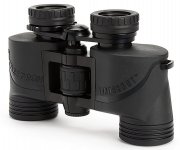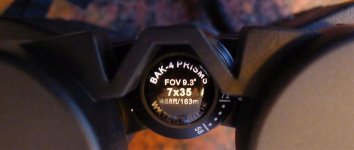chris6
Well-known member

Looking for a wide angle alternative to Nikon EX 7x35 I was interested by the specs of Celestron Landscout 7x35, which is not listed on UK's distributor's website. Finding no review of this model I ordered it from Amazon uk at £67.48 including delivery, which seemed reasonable, to discover what it is like.
After more digging I did find an old thread about the Celestron Ultima DX 8x32, a predecessor of Landscout 7x35, compared to the well known Yosemite (I think it was 6x30 but might be 8x30), bearing in mind that the Yosemite is generally said to be 'ok' or 'recommended'.
To me, both Yosemite 6x30 and Kowa had seemed to give a rather washed out view so the comparison by FrankD was of interest http://www.birdforum.net/showthread.php?t=118652
In the same thread Ceasar compared DX 8x32, at less than $99, with Nikon 8 x 30 EII and especially Nikon 8 x 32 SE, and largely agreed....so on that basis the 7x35 Landscout might turn out to be ok. Will report when it arrives, but in the meanwhile would anyone else comment?
After more digging I did find an old thread about the Celestron Ultima DX 8x32, a predecessor of Landscout 7x35, compared to the well known Yosemite (I think it was 6x30 but might be 8x30), bearing in mind that the Yosemite is generally said to be 'ok' or 'recommended'.
To me, both Yosemite 6x30 and Kowa had seemed to give a rather washed out view so the comparison by FrankD was of interest http://www.birdforum.net/showthread.php?t=118652
In the same thread Ceasar compared DX 8x32, at less than $99, with Nikon 8 x 30 EII and especially Nikon 8 x 32 SE, and largely agreed....so on that basis the 7x35 Landscout might turn out to be ok. Will report when it arrives, but in the meanwhile would anyone else comment?
Attachments
Last edited:





